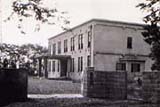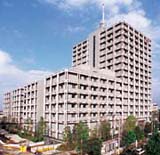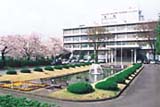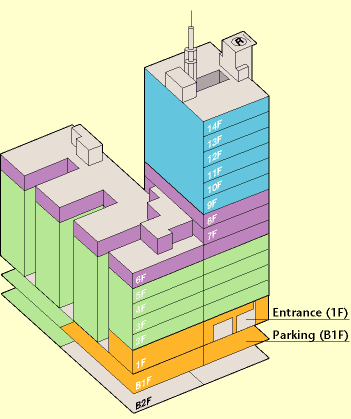| First-generation STRL |
STRL was established
in 1930, five years after the commencement of radio broadcasting
in Japan. The initial researchers numbered only 16, including the
Director-General. The actual facility served as a cornerstone of
Japanese broadcasting technology though the prewar and postwar periods. |
 |
|
 |
| New STRL building |
 |
| Rapid development of various media has brought
about a bewilderingly change in the broadcasting world of the early
21st century. To meet the challenge implicit in this change, STRL's
new research facilities will foster research in diverse fields;
our goal as researchers has always been to walk down new paths of
learning. |
|
| Second-generation STRL |
A new complex opened
in 1961 to replace the old one. As the sixties was the beginning
of "TV era" in Japan, a large number of events took place within
its walls. It played a significant role in the advancement of broadcasting
technology, from color television, to satellite broadcasting, Hi-Vision
(HDTV), and digital broadcasting. |
 |
|




